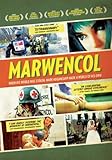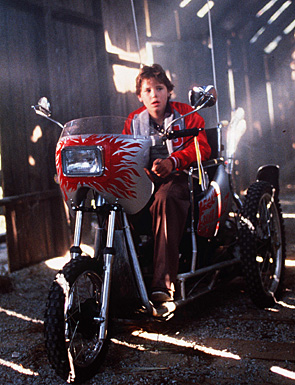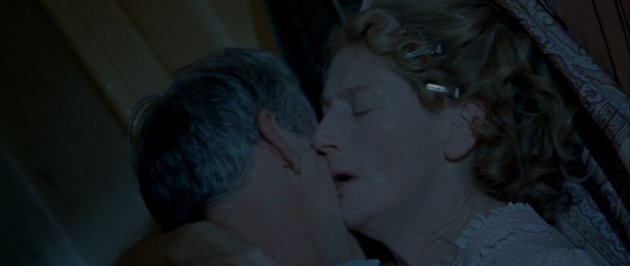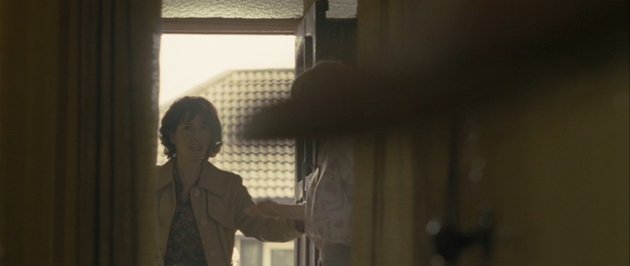Surfing has become medicine for military veterans suffering from physical and mental trauma. Resurface follows veterans who find that the ocean is the one place they can go to for peace. Click through to watch the trailer.
American Sniper
[easyazon_image add_to_cart=”default” align=”left” asin=”B00RGZ94SG” cloaking=”default” height=”160″ localization=”default” locale=”US” nofollow=”default” new_window=”default” src=”http://ecx.images-amazon.com/images/I/61xojS981XL._SL160_.jpg” tag=”disabilitymovies-20″ width=”113″]Based on [easyazon_link asin=”0062238868″ locale=”US” new_window=”default” nofollow=”default” tag=”disabilitymovies-20″ add_to_cart=”default” cloaking=”default” localization=”default” popups=”default”]Chris Kyle’s autobiography[/easyazon_link] of the same name, [easyazon_link asin=”B00RGZ94SG” locale=”US” new_window=”default” nofollow=”default” tag=”disabilitymovies-20″ add_to_cart=”default” cloaking=”default” localization=”default” popups=”default”]American Sniper[/easyazon_link] encompasses several depictions of injury and disability sustained during the Iraq war, not the least of which is the Post-Traumatic Stress Disorder of Navy SEAL and sniper Chris Kyle himself. Once back stateside, Kyle encountered a former soldier and amputee whose life he had saved, who thanked him but–possibly recognizing some signs of PTSD–strongly urged Kyle to join them down at the VA. After an incident where he nearly kills a dog at a barbecue, Kyle decides to do just that. The VA doctor tells him that there are plenty of men who still need saving right here at home, and introduces Kyle to some of the wounded warriors still in recovery there.
Kyle begins taking the men out shooting “to get their balls back”, and the resulting discussion inevitably turns to how they acquired their injuries. In a memorable scene, one soldier credits his smoking habit with saving his right hand; he had been reaching for a cigarette when the IED hit, just far away enough from the blast that took away his legs and left hand. The soldier, Specialist Bryan Anderson, and his story were the genuine article, urged by star Bradley Cooper to tell his story candidly.
Another soldier Kyle visits is his buddy Ryan “Biggles” Job, wounded and blinded when he was shot in the face. Biggles is depicted as having died on the operating table shortly after his injuries and asking his girlfriend to marry him. In real life, Job was blinded in battle in 2006 when an enemy sniper’s bullet struck his rifle, sending pieces of the shattered weapon through his face. He survived much longer than he does in the movie. He was discharged from the military, got married, attended college, got a job, and climbed Mount Rainier and Mount Hood. Job died in 2009 from complications after going back for more facial reconstructive surgery while his wife was pregnant with their first child.
The Fisher King
[easyazon-image align=”left” asin=”B0043X1FM2″ locale=”us” height=”160″ src=”http://ecx.images-amazon.com/images/I/512WbsNjSBL._SL160_.jpg” width=”114″][easyazon-link asin=”B0043X1FM2″ locale=”us”]The Fisher King[/easyazon-link] includes several brief depictions of physically disabled people, as well as Robin Williams in a not-exactly-clinically-accurate-but-lovable! depiction of a former professor suffering from Post-Traumatic Stress Disorder. (After witnessing the brutal murder of his wife at the hands of a mentally ill man, he spends some time catatonic “in a mental place on Staten Island” and emerges believing he’s a knight on a holy quest.) The gunman, clearly very lonely and seeking advice on talking to a woman, had been goaded into shooting up a popular bar by radio shock-jock protagonist Jack. When he learns of the effect of his bullying, Jack in turn becomes suicidally despondent and attempts to drown himself. In a twist of fate, Jack is introduced to Parry (who is accompanied by a couple other homeless men, one using crutches) and experiences the painful flutterings of an awakening of conscience.
Parry takes him back to the basement he’s been crashing in, where it becomes obvious that he not only has auditory hallucinations but tries to enlist Jack on his quest for the Holy Grail. Jack tries to give him a little money instead, but Parry’s kind “landlord” (who wears an old-fashioned hearing aid in one ear) explains that Parry needs much more than a few dollars to regain what he had lost. Perry tells Jack the story of the Fisher King and the festering wound he received, mirroring the wounds they’ve received in life (and manifest in Jack’s bandaged hand).
Both a motorized wheelchair user and a little person wearing a business suit are milling about in the background when Parry takes Jack to see Lydia, the woman he admires from afar. Parry then shows Jack the “castle” of wealthy philanthropist Landon Carmichael, from whom Parry intends to steal the Grail. (In this high-rent district, there’s another person in a wheelchair, this time an elderly lady being pushed by a uniformed attendant.)
Jack balks at the dangerous plan and suddenly tries to confront Parry with the reality of his identity. Parry is quickly overwhelmed and has a screaming fit, running away to a nearby park where he snaps out of it to come to the aid of an injured and incoherent gay man. Jack and Parry take “Venice” to a crowded, dirty public hospital for medical attention, and Jack’s introduction to the disparities in health care between the rich and the poor.
Jack’s education continues with a trip to Grand Central, where he strikes up a conversation with a disabled veteran begging for spare change. Someone tosses a coin on the floor where the wheelchair-using man can’t reach to pick it up.
“He didn’t even look at you.”
“Well, he’s paying so he don’t have to look.”
“Say, guy goes to work every day eight hours a day, seven days a week. He starts questioning the very fabric of his existence. Then one day about quitting time the boss calls him into the office and says, “Hey Bob, why don’t you come on in here and kiss my ass for me, will you?”
“Well,” he says, “hell with it. I don’t care what happens. I just want to see the expression on his face as I jam this pair of scissors into his arm.”
Then he thinks of me. He says “Wait a minute. I got both my arms, I got both my legs. At least I’m not begging for a living.” Sure enough, Bob’s going to put those scissors down and pucker right up. See, I’m what you call a moral traffic light, really. I’m, like, saying “Red. Go no further. Boop… boop…”
A successful first date with Lydia sets up an internal conflict for Parry, and he has a showdown with The Red Knight, the symbol of his trauma. He becomes stupefied with fear, and is taken back to a mental hospital. Lydia oversees his care, providing cutesy sheets and demanding he be clad in pajamas instead of a hospital gown, but this isn’t enough to wake the prince. Jack presents the Grail and Parry magically wakes up, restored to sanity (and with no side effects from the psychoactive drugs he was probably pumped full of) and ready to lead a chorus of “the bungled and the botched” in song.
My Big Fat Greek Wedding
[easyazon_image add_to_cart=”default” align=”left” asin=”B00006FMUW” cloaking=”default” height=”160″ localization=”default” locale=”US” nofollow=”default” new_window=”default” src=”http://ecx.images-amazon.com/images/I/51EhfedTTUL._SL160_.jpg” tag=”disabilitymovies-20″ width=”106″]The family in [easyazon_link asin=”B00006FMUW” locale=”US” new_window=”default” nofollow=”default” tag=”disabilitymovies-20″ add_to_cart=”default” cloaking=”default” localization=”default” popups=”default”]My Big Fat Greek Wedding[/easyazon_link] bring their grandmother to the U.S. from Greece, because they “weren’t weird enough”. Yiayia has trouble adjusting and shows signs of dementia, thinking she’s been brought to a Turkish prison:
Yiayia: [spoken in Greek] Listen up, ugly Turk. You’re not kidnapping me!
[Gus laughs and tries to hug her, but Yiayia suddenly hits him and runs out the door. Maria and Gus chase after her.]
Gus: Mama, please! The Greeks and the Turks friends now!
Toula: [narrating] We told my grandma the war was over, but she still slept with a knife under her pillow.
Yiayia also frequently wanders, and is shown being returned by an annoyed neighbor who warns them “Keep your mother off my lawn, out of my basement, and away from my roof!” Later, Yiayia is seen making a break for it again, but is repelled by strategically placed sprinklers.
It is unclear whether Yiayia realizes there’s a wedding going on or whether she simply finds a box of keepsakes that jolt her memory at a pivotal time, but she helps main character Toula understand the true depths of her family’s investment in the big event.
Though Yiayia’s function in the script is to provide comic and emotional relief, there’s a darkness to her wacky antics. She also serves as an unspoken reminder that many survivors of atrocities who develop dementia suffer from flashbacks and must relive the horrors of war.
Silver Bullet
[easyazon-image align=”left” asin=”B000063URC” locale=”us” height=”160″ src=”http://ecx.images-amazon.com/images/I/41SDMRH0M5L._SL160_.jpg” width=”110″]Based on Stephen King’s [easyazon-link asin=”0451822196″ locale=”us”]Cycle of the Werewolf[/easyazon-link], 1985’s [easyazon-link asin=”B000063URC” locale=”us”]Silver Bullet[/easyazon-link] imagines a young boy living with paralysis in a small Maine town being terrorized by a werewolf. Though it’s hardly the first time a horror movie has had a disabled character as its protagonist, they don’t usually come with souped-up wheelchairs as accessories. Marty rides around in an old chrome transport wheelchair indoors, but for outdoors his hard-drinking Uncle Red has tricked out a similar folding wheelchair with handlebars on the side containing the throttle for a gas-powered external motor. A license plate on the back reads “Silver Bullet”, covering a box that looks suspiciously like a battery case, though Marty must conspicuously run out of gas a couple of times to further the plot. (And endure “check the oil” jokes from the local gas station attendant. You can tell Stephen King isn’t terribly familiar with wheelchair users, because Marty reacts as if he’s never heard that joke before.)
Marty’s older sister considers him a burden and resents having some of his care thrust upon her, though the majority of the caregiving seems to be done by his overprotective mother. It seems to be Uncle Red who treats him like everybody else, telling him dirty jokes and teaching him to play cards to the chagrin of his mother. Red presents Marty with an even snazzier Silver Bullet rebuild one summer day, this one more closely resembling a motorcycle.
Eager to try out his new wheels, Marty climbs down the trellis outside his bedroom window on the night of July 4th to set off some illicit fireworks on a remote wooden bridge, where Marty first encounters the werewolf. He has the presence of mind to shoot a rocket into its eye, enabling his sister to identify the local reverend as the culprit when he suddenly starts sporting an eyepatch the next day.
Marty attempts to enlist the aid of the local police, but (as the book explains) the adults in his life decide he must have Post Traumatic Stress Disorder and is making up fantastical stories to cope with it. (In the book, Marty is then shipped off to live in Vermont to “recuperate”.) After another werewolf encounter in a barn (where the Silver Bullet runs out of gas again), Marty begins writing anonymous letters to the reverend, urging him to kill himself. This, plus the inherent bloodlust that comes with being a werewolf, slowly drives the reverend insane.
The werewolf attacks again on Halloween, first knocking out Uncle Red and then turning on the children. Marty stops him with the other kind of silver bullet, which not only removes the menace from the town but enables his sister to see him in a different light.
Wheelchair-accessible motorcycles are no longer the stuff of fiction; called “wheelchair tricycles”, they are available for purchase from several different companies. Several models even allow use without transferring from your chair.
The Shipping News
[easyazon-image align=”left” asin=”B00005RDR6″ locale=”us” height=”160″ src=”http://ecx.images-amazon.com/images/I/51MC3yqCKxL._SL160_.jpg” width=”113″]The world of [easyazon-link asin=”B00005RDR6″ locale=”us”]The Shipping News[/easyazon-link], based on [easyazon-link asin=”B000B86FJQ” locale=”us”]the book of the same name[/easyazon-link] by E. Annie Proulx, is populated with a number of dysfunctional people passing as “normal”, only because they are fortunate enough to have average IQs. Emotional wreck Quoyle, having been raised by a cruel father, who almost drowns him using the ‘sink or swim’ method to teach him swimming, returns to his childhood home in Newfoundland after both his career as an inksetter in New York, and his relationship with Petal, a woman who sleeps around and drinks during her pregnancy with his daughter Bunny, go bust.
The latter flames out in spectacular fashion, with Petal and her latest man on the side dying an instant but accidental death after having crashed into a highway guardrail, and the police locating them and reclaiming Bunny after Petal apparently sold Bunny to an illegal adoption broker. Though Petal is never given a diagnosis in the movie, serious emotional problems are thereby implied. It is much the same with Quoyle’s father, who might well be a sociopath, as he not only “raped his little sister” but spends Quoyle’s formative years belittling him, the harassment only ending when he commits suicide, leaving a note with a parting guilt trip.
At least, unlike in real life, in the movie, these people die expediently before Quoyle returns to Newfoundland with his preteen daughter Bunny to make a fresh start. (He returns there because between family property- a rent-free house on a windy cliff kept from blowing away by tie-down cables-and a newspaper job arranged by family and friends, it is, at least in theory, relatively easy for him to survive and provide for his daughter.)
Alas, his new life will not be so easy: his newspaper job covering auto accidents, shipping news, etc., seems to be calculated to trigger his presumed PTSD.
Knocking around in a lonely old house full of draughts and creaks, Quoyle’s daughter Bunny starts claiming to see ghosts and engaging in such uncharacteristic behaviors as “bashing the brains out of her baby doll”, which the mental health establishment would consider to be signs of a disturbed child.
New love interest widow Wavey Prowse sees such things in a very different way, describing Bunny as “sensitive” (to supernatural phenomena), telling Quoyle not to worry about it. She seems quite normal, and even emotionally stable, though her son Herry, a boy who seems to physically be Bunny’s age, is marked by society and his appearance (hanging mouth, upturned eyes) as not being so. (Local opinion has it that the boy “ain’t right” because she was holding him while her husband drowned in a boating accident.)
When Wavey introduces Herry to Bunny and Quoyle at the playground, Bunny asks “what’s wrong with him?”.
Wavey at first tells Bunny that nothing is wrong with him, but later elaborates that “When he was being born, he didn’t get enough air to breathe, and that makes him a little slower than most people”. Herry does not speak then, or at any other time during the picture.
At a later time, Quoyle sees Herry standing outside his car, moving his head to track the swaying of his windshield wipers.
Though nothing more than a superficial acquaintance is made of Herry in the movie, it is revealed that other people are not quite what they seem in some respects. When reminiscing, Aunt Agnis, a dignified matriarch in the rest of the movie, described “the love of her life” as a woman named Irene, shown in an old photograph. Wavey reveals that her husband left her voluntarily (and is presumably still alive somewhere) but that she wrecked his boat and feigning widowhood, gained the sympathy and support of the townspeople thereby.
Marwencol
 Marwencol is the fictional miniature town creation of artist Mark Hogancamp, who uses the model-building and elaborate staged scenarios of his World War II-inspired tableaux as both occupational therapy and art therapy following an assault by a group of men which left him with physical injuries, brain damage, and a side order of PTSD. (It is explained in one of the deleted scenes from the “extras” section of the DVD that the fictional WWII era Belgian town’s name is an amalgam of “Mark” and some female friends’ names.)
Marwencol is the fictional miniature town creation of artist Mark Hogancamp, who uses the model-building and elaborate staged scenarios of his World War II-inspired tableaux as both occupational therapy and art therapy following an assault by a group of men which left him with physical injuries, brain damage, and a side order of PTSD. (It is explained in one of the deleted scenes from the “extras” section of the DVD that the fictional WWII era Belgian town’s name is an amalgam of “Mark” and some female friends’ names.)
Mark had had artistic inclinations before the assault, in which a group of teenage boys literally kicked his head and stomped on his face, after they had overheard him telling someone in a bar that he was an occasional cross-dresser. In the movie, he shows some of the drawings he had made prior to the attack, and explains that his hands are now too shaky to do similar drawings, so the model-making that goes into his modified dolls, miniature interior and exterior settings, and vehicles contributes to his own efforts to restore his coordination and former spatial abilities. Mark’s pre-injury drawings were used as State’s evidence in proving the extent of the damage to his brain by showing how the assault had affected his abilities afterwards.
Mark’s extensive brain injuries had the effect of separating him from certain aspects of his past. His case of amnesia is serious enough that he claims not to clearly remember having been married. He had the wedding picture and every so often, he said, he would get (mental) “snapshots”, the occasional visual memory from his past, but nothing cogent, no clear narrative of the time they were together or particulars about her. He refers to the time after the injury as his “second life”. He not only got a second chance at life when he could have died, but he had the opportunity to “start fresh” in areas of his life he otherwise might not have. He showed on camera a set of self-written and illustrated graphic novel type books which he called “the alcohol journals” in which, prior to the injury, he had documented alcohol-motivated behavior. His former employer said on camera that he had often been absent from work due to his former life as a problem drinker. Since the amnesia from the injury resulted in his not being able to remember the feelings he got from alcohol, he said he decided to stay away from alcohol for the future, thus effectively ending a path of alcohol abuse.
It is explained elsewhere in the film that Mark received only a limited amount of occupational therapy following the reconstructive surgery on his face. The extent of the damage to his brain was such that Mark had to start life after the injury from almost the beginning, having to literally learn to walk again. Samples of writing exercises are shown in which Mark was directed to practice pre-writing motions in order to re-learn the strokes to write in cursive. The powers-that-be discontinued all such rehabilitative therapy well before it could be said that Mark was restored to his former abilities. As an example of this, in one part of the film, Mark is shown walking by the side of the road with a model vehicle on a string. He explains that though a disability such as his brain injury is not obvious to others, it affects common everyday activities such as this. He cannot “walk and look around” as others do. If he takes his eyes away from the white line at the side of the road on which he is walking, he soon finds himself straying far from the line and in danger from the traffic.
Less tangible, but still in need of remediation, is the emotional fallout from the event. Mark uses the sort of doll play (stories and scenarios in a tangible, time-specific setting) commonly associated with little girls, to work out some of his feelings about the assault and his place in the world in general. Having unwittingly re-invented play therapy, Mark voices the regret that he has no one to talk to. If he had psychotherapy or counseling of any kind, it has not been continued. He presumably lives on Social Security Disability payments and works 1 day a week in a restaurant called The Anchorage, where he had worked full-time prior to the incident. Most of the women he meets are married or otherwise uninterested, so he reproduces them in doll form and adds them to his storyline. His friends are baffled but honored to be added to his “collection” and fantasy world as “good guys”. The “bad guys” are society’s easy targets: male dolls in SS uniforms, though Marwencol is an otherwise strangely peaceable town where 1/6 scale German and Allied uniformed action figures lay aside their arms, go to the miniature bar, party, and have a good time. His fantasy world has a disproportionately high female population: 27 Barbies. After having been assaulted, he clearly identifies with the female characters’ vulnerability, and stages a scenario in which the Barbies gruesomely defeat the Nazis.

Mark Hogancamp poses and photographs action figures in the fictional WWII era Belgian town Marwencol.
A photographer friend gives him a camera, enabling Mark to photograph his tableaux. The photographs and story scenario become good enough for Eospus magazine to publish. The editor arranges an art exhibition in NYC at White Columns gallery for Mark’s photos and some of his dioramas. It is with mixed feelings and some trepidation that Mark puts together the pieces for the gallery show (he is afraid of having them lost, damaged, or otherwise taken away from him). However, though the PTSD causes him to fear large numbers of people and retreat from noise and hustle and bustle, he recognizes that people want to meet the artist, so being physically present in NYC for the gallery opening of his show is a necessary evil.
Made in Dagenham
 Disabled veteran George doesn’t get much screentime in Made in Dagenham, but that merely belies the size of the role disability and caregiving plays in the women’s rights movement. George would likely be diagnosed with Post Traumatic Stress Disorder today, and his wife Connie is not only the breadwinner for the two of them (working as a machinist in Britain’s Ford factory), but also George’s sole, unpaid caregiver. There was little understanding and even less treatment available for PTSD back then, and Connie can only describe George to others in her labor union as “touched”.
Disabled veteran George doesn’t get much screentime in Made in Dagenham, but that merely belies the size of the role disability and caregiving plays in the women’s rights movement. George would likely be diagnosed with Post Traumatic Stress Disorder today, and his wife Connie is not only the breadwinner for the two of them (working as a machinist in Britain’s Ford factory), but also George’s sole, unpaid caregiver. There was little understanding and even less treatment available for PTSD back then, and Connie can only describe George to others in her labor union as “touched”.
Connie, Rita O’Grady, and the other machinists in their all-female leatherworking shop realize that they’re being paid much less than their male counterparts for skilled work, and organize a strike. Connie has been the worker’s representative to management up to that point, but when relations break down she explains to Rita that she’d prefer to take a backseat in the struggle because she has to put George first.
To illustrate her domestic worries, one night shortly thereafter George wakes up screaming, and becomes combative when Connie tries to soothe him. Agitated, he makes for the door, worried that Connie will “try to put [him] away”. Connie embraces and reassures him. In a later deleted scene, Connie gives the confused and forgetful George his medication just before leaving for a union meeting, reminding him that he knows where she’ll be.
Later when Connie returns, she finds that without supervision, George has committed suicide.
Her fellow union machinists support her during George’s funeral, and later Rita uses George’s story to garner support for equal pay among the male workers. George’s service and the need to fight for what they believe in speaks to the union men in terms they can relate to, and they vote to support the women. With that and the help of Labour politician Barbara Castle, the female machinists win concessions from the British government, and a guarantee of equal pay in the future.
Passchendaele
 Passchendaele was the name of a town and of one of the bloodiest battles of World War I.
Passchendaele was the name of a town and of one of the bloodiest battles of World War I.
Public sentiment in a town in Canada was very much against men of military age who were not in the service, and a young man with the humble job of typesetter and the condition of asthma (and who was thus medically excused from the draft) was feeling the shame. He has the idea that he has a chance for excitement and glory in war. He wants to impress the girl he is engaged to, and more importantly, her father, a powerful and wealthy newspaper editor/publisher.
It is made clear later on in the movie that the powers-that-be recognized that those with asthma were less likely to survive the poison gas attacks on the part of the Germans for which this war was noted, and thus gave them medical exclusions from military service in WWI.
This movie did a good job of portraying the kind of war fever that went along with a country’s participation in this conflict; there was a public event at which men of draft age who were not in the military were publicly shamed, a woman of German ancestry had her house splattered with red paint and word “Hun”, in spite of the fact that she was a nurse in the war, and if you articulated the fact that there were certain drawbacks to war itself, every opportunity was taken to question your courage, your patriotism, and your sanity.
One person who was the target of this sort of thing was Sgt. Michael Dunn, a soldier sent back to Canada after having participated in a particularly bloody battle, with a diagnosis of “neurasthenia” or “shell shock”, now known as PTSD. He is seen recounting and regretting particularly graphic acts of violence. He appears to have a conscience, and this is a problem for those above him. The brilliant minds higher up on the chain of command kept him in the service and made him a recruiter. As such, he refused to recruit the young man whose asthma, according to regulations, precluded his participation. His immediate superior, who later lets the young man with asthma join in spite of the fact that it is unlikely that the asthma magically went away because the fiance’s father wrote a medical clearance, throws Dunn’s diagnosis in his face when he objects to the fact that the superior officer just broke his own rules for recruitment! Dunn later gets his own back. At a time when he has the element of surprise, Dunn threatens the superior officer and gets him to sign papers and send him back to the front, as he intends to serve as protector for the asthmatic boy, who is a relation to the nurse who is Dunn’s love interest. Before both of them leave to rejoin the war, Dunn helps the nurse kick her morphine habit, acquired during her last tour of duty. Dunn also socializes with a man with an amputated arm. The man lost the arm in an accident in a sawmill, “but the ladies don’t know that”, he says. Indeed, when the battle of Passchendaele itself is portrayed, it is shown that in this particular war, with its heavy use of artillery similar to that used in today’s wars, but without today’s medical technology, losing a limb in the war was not an uncommon fate. It helps that at one point in the movie there is a medical lecture concerning what artillery shells do to the human body. (It was, in fact, during World War I that the term “basket case” originated. It did not initially refer to the mental or psychological paralysis it implies today, but to someone who had managed to have every extremity shot away or damaged beyond repair, who had to be literally carried around in a basket.)
In spite of Dunn’s efforts to protect him, the boy with ashma dies, though not of asthma-related complications ensuing during a gas attack. In fact, the use of poison gas is suprisingly absent from the battlefield portrayal in the movie (perhaps because a heavy rain is falling for much of the time the armies are in the field).
He is strong enough to hand Dunn a neck chain and medal his sister gave him, which later hangs on the marker for Dunn’s grave.
The Haunted Airman
 Based on the novel The Haunting of Toby Jugg, The Haunted Airman is set in a mansion in rural Wales during WWII. The main character is a former RAF pilot who has been shot down and has ended up in a wheelchair due to his injuries. However, his injuries are not soley physical, it is implied that he, like at least one other similar man in the tumbledown manor house being used as a makeshift hospital, is also suffering from PTSD, then known as “shell shock” or “battle fatigue”.
Based on the novel The Haunting of Toby Jugg, The Haunted Airman is set in a mansion in rural Wales during WWII. The main character is a former RAF pilot who has been shot down and has ended up in a wheelchair due to his injuries. However, his injuries are not soley physical, it is implied that he, like at least one other similar man in the tumbledown manor house being used as a makeshift hospital, is also suffering from PTSD, then known as “shell shock” or “battle fatigue”.
Having not lived through WWII and possessing only a limited exposure to England, I cannot speak on whether the portrayal of the facilities and technology at this particular hospital is a realistic depiction of institutions of this kind. But they are true to life in calling nurses “sister” and having them wear nun-like headdresses. And they are pretty spot-on as concerning some things that patients often experience in any sort of hospital. One of the early scenes in the movie shows the former pilot lying on a litter left in front of the hospital for what seems an indeterminate amount of time while people hurry by.
Yes, in real life, patients really do get left lying around. When he experiences incontinence and the nurse changes the bedsheets and tells him it’s nothing to worry about, but something that tends to happen “at the beginning”, that’s quite accurate too. (Real nurses are quite blase about things like this and talk about bodily functions openly, including the ones that embarrass most people.)
However, he’s got bigger problems than paraplegia or PTSD. It is hinted early in the picture that he is having or has the potential to have, an improper relationship with his aunt (aunt by marriage, at least), a thing that many people would find quite shocking, but it doesn’t seem to bother him, and the aunt seems amenable to it in the middle of the picture, holding hands with him and kissing him romantically during a visit with him. On later visits, she grows more distant, presumably on the doctor’s advice. By the end of the picture, she had repudiated that sort of relationship with him. When he makes sexual overtures to her, she is unwilling… and then his Oedipus gets even more complex.
Where the film starts to diverge from reality, however, is in depicting some of the frightening, hallucinatory experiences that he has.
It is true that the building in which he is in is an older building with a lot of dark wood and stone and shade trees is perhaps a theatre in which an overactive imagination can romp. Spiders are also prominently featured; perhaps they assume increasing importance to him because he is less able to avoid them with his present mobility-impairment and wheelchair use. The wheelchair they have him in is not the kind that he can push himself, and on one occasion when the nurse pushes it, she wheels him right into a big spiderweb. Another reason that spiders assume additional importance is because he has a situation of enforced idleness, and it is perhaps fair to say that he notices them more than when he was working.
Or maybe, there are just simply a whole lot of big, ugly spiders around.
In spite of the large and prominently featured spiders, insects in numbers make an appearance, too. At one point he sees a number of beetles walking by while he is in bed and he falls out of bed trying to chase them away. On another occasion when something like this happens, he drags himself away from his hospital room and into a bathroom, where he retreats to a bathtub, which (the viewer sees) has spiders in the drain. The doctor who is treating him (it is hinted that this doctor is acting as a therapist of sorts whether or not he is actually recognized as a psychiatrist) characterizes it as an attempt to retreat to the womb and the amniotic fluid in spite of the fact that the bathtub in fact had no water.
It can be hard to follow this picture because it is sometimes unclear as to whether some of the things they show are hallucinations on the part of the airman, or real but unpleasant things (like the spiders) just setting an uncomfortable and “creepy” atmosphere. I do not know whether this is deliberate on the part of the filmmakers or accidental as a limitation of the technology and/or the storyline. But it is a reason why one of the nurses in the beginning of the movie told him “we don’t use the terms ‘mad’ and ‘normal’ around here. Everyone here is a little bit psychotic”, she said, looking down through the window at one of the doctors, the one who would later endeavor to give him therapy.
For the teenage girls in your life, here’s The Haunted Airman 27 x 40 Movie Poster, featuring Robert Pattinson looking appropriately haunted.




